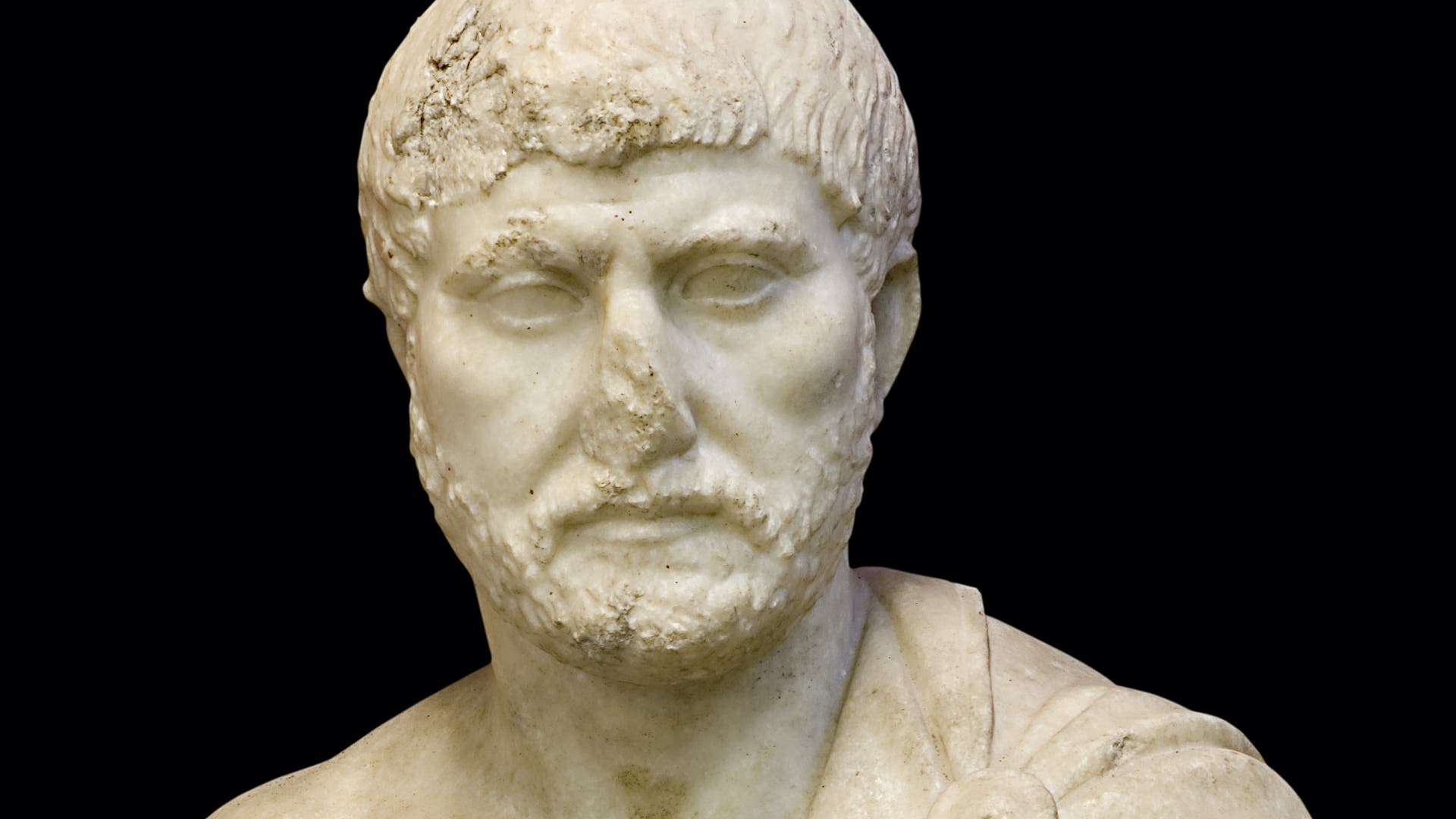The Roman administrators and rulers of Judea were also allowed to mint their small bronze coins in the name of the emperor. These coins have survived since the time of Pontius Pilate, but not from the reign of Claudius Paternus Clementianus. Other than this, the administrative activity of Paternes in Judea is not documented by local inscriptions.
The last stages of Paternos’ career
The same is true of his later states in the provinces of Sardinia and Corsica – from 115 to 119 – and Africa – from 119 to 122. Africa meant the province that emerged from the ruined empire of Carthage. Eastern Algeria and Tunisia and western Libya (Tripoli) lie there today. For the final stop in Paternos’ career, the source situation looks much better. The fact that he was a procurator in Norikum from about 122 to 125 is no longer preserved in the “stone of his career”, but evidence of his work has been found in this county.
© Courtesy of the Carinthian State Museum (details)
Claudius Paternus Clementianus | When he took office at Noricum in 122, Paternus renovated the temple of the goddess Nuria. Experts discovered this bust of a bearded old man in the remains of the temple. Stylistically, it belongs to the time of Paternus and could also represent the proxy.
Similar to Judea, Noricum was initially a region of limited autonomy, a tributary of the Roman Empire – except that the romanization here was probably more peaceful and seemed to be supported by the local population. Emperor Claudius declared Noricum a Roman province, the regions of which today include nearly southeastern Bavaria (Shimgau), parts of Tyrol, and over all of the present-day Austrian states of Salzburg, Carinthia, Styria, and Lower and Upper Austria. The province was subservient to equestrian agents, such as Paternus Kahn.
It is possible that his descent from the neighboring province of Raetia and his Celtic roots were useful for his appointment as ruler of Noric. Because many of the about 30 owners of this office known by name so far can be assigned to the regions of origin, especially in northern Italy and the Alpine provinces. Perhaps good relations with the local people will be useful in this post.
Paternos sponsored the temple to Nuria
Emperor Claudius had made Veronum in today’s Carinthia the provincial capital and seat of the governor. Buildings were also erected there during his service to Paternus. At least we know a fragmentary building inscription belonging to the temple of the Roman Celtic goddess Nuria. According to numerous statues and votive offerings, she was probably the main deity in the area. Inscriptionists deciphered and supplemented the following text on the Paternus inscription:
[Noreia Au]g (ustae) sacrumsabi[nius … b(ene)f(iciarius) … Cl]Audi (i) Paterni Clementiani proc (uratoris) August (usti)
a [solo restituit cel]L spine Pavimenta porticum.
Based on this, a “beneficiary” appears, i.e. a prominent figure named Sabi, charged with police duties and subordinate to Governor Paternos.[nius] To renovate the Holy of Holies (cella), the columns (columnae), the stucco (Pavimenta) and the entrance (porticus) of the sanctuary with a dedication to the work. The complementary name Sabinius can be considered fairly certain, since the Sabinii family is repeatedly occupied as mayor of Virunum.
In addition, archaeologists found a life-size bust in the Temple of Noreia, which is probably none other than Paternus himself. Stylistically, experts date it to the time of Emperor Hadrian, who reigned from 117 to 138. The picture shows an old man with a wrinkled face and a beard. A coat is placed over the left shoulder of the bare upper body, which is held together by a disc brooch. The well done painting is likely the work of an Italian sculptor.
It is not possible to determine how long Paternos lived after he put forward his wonderful portrait of old age. In any case, after his service in Noricum, he returned as a veteran to his home of the Rite at Abodecum, where he probably died around the year 130. Paternus was on the road in the Roman Empire as a military man and civil servant for decades – the man with Celtic roots who, like Pontius Pilate, commanded To unwelcome Judea to start a new career. At least from the Romans’ point of view, it was probably not a site in the Holy Land.

“Alcohol buff. Troublemaker. Introvert. Student. Social media lover. Web ninja. Bacon fan. Reader.”






More Stories
“Time seems to cure long Covid.”
Science: The use of artificial intelligence is changing the way hospitals operate
Simple recipe: sweet cream cheese slices from the tray